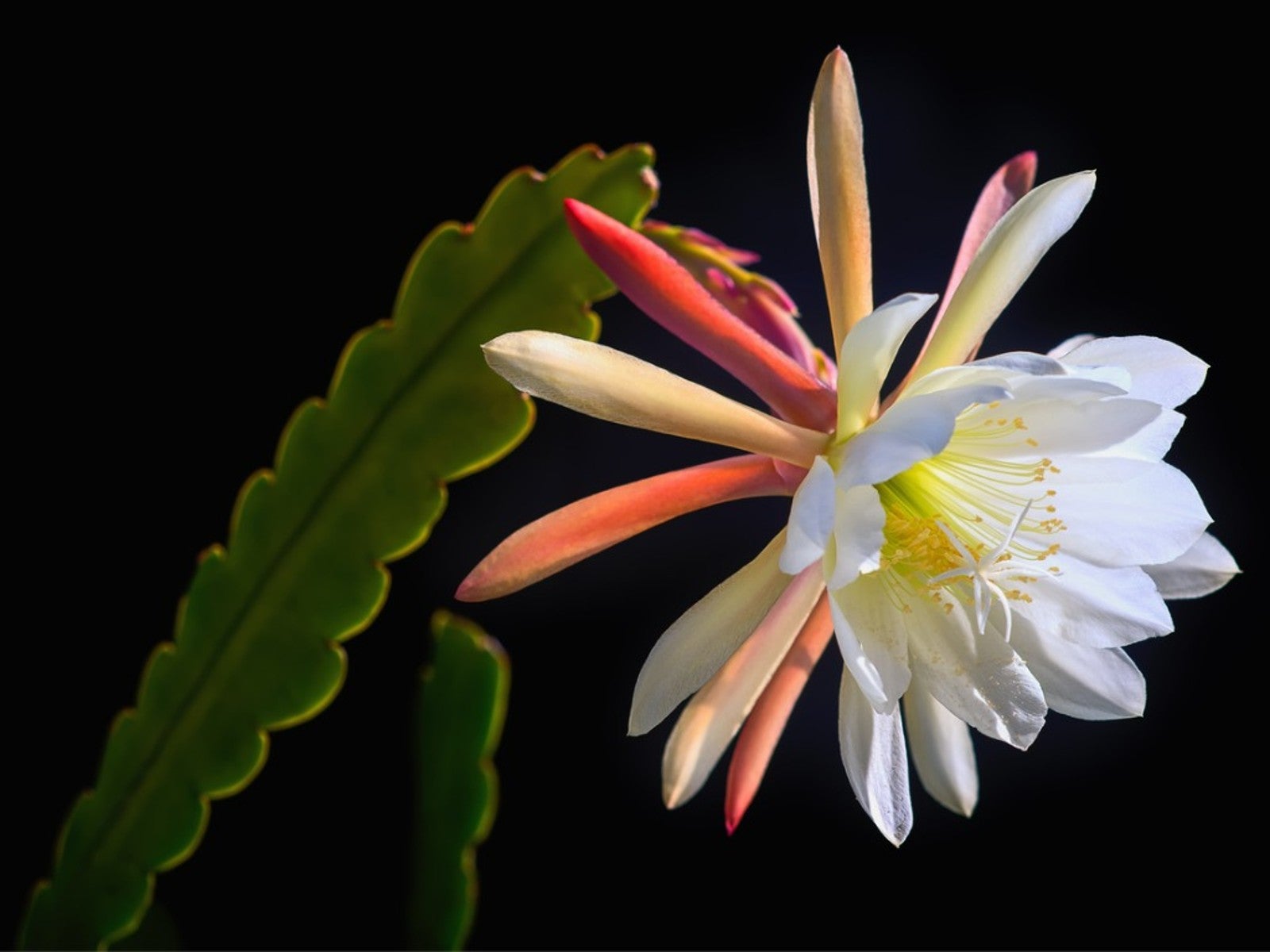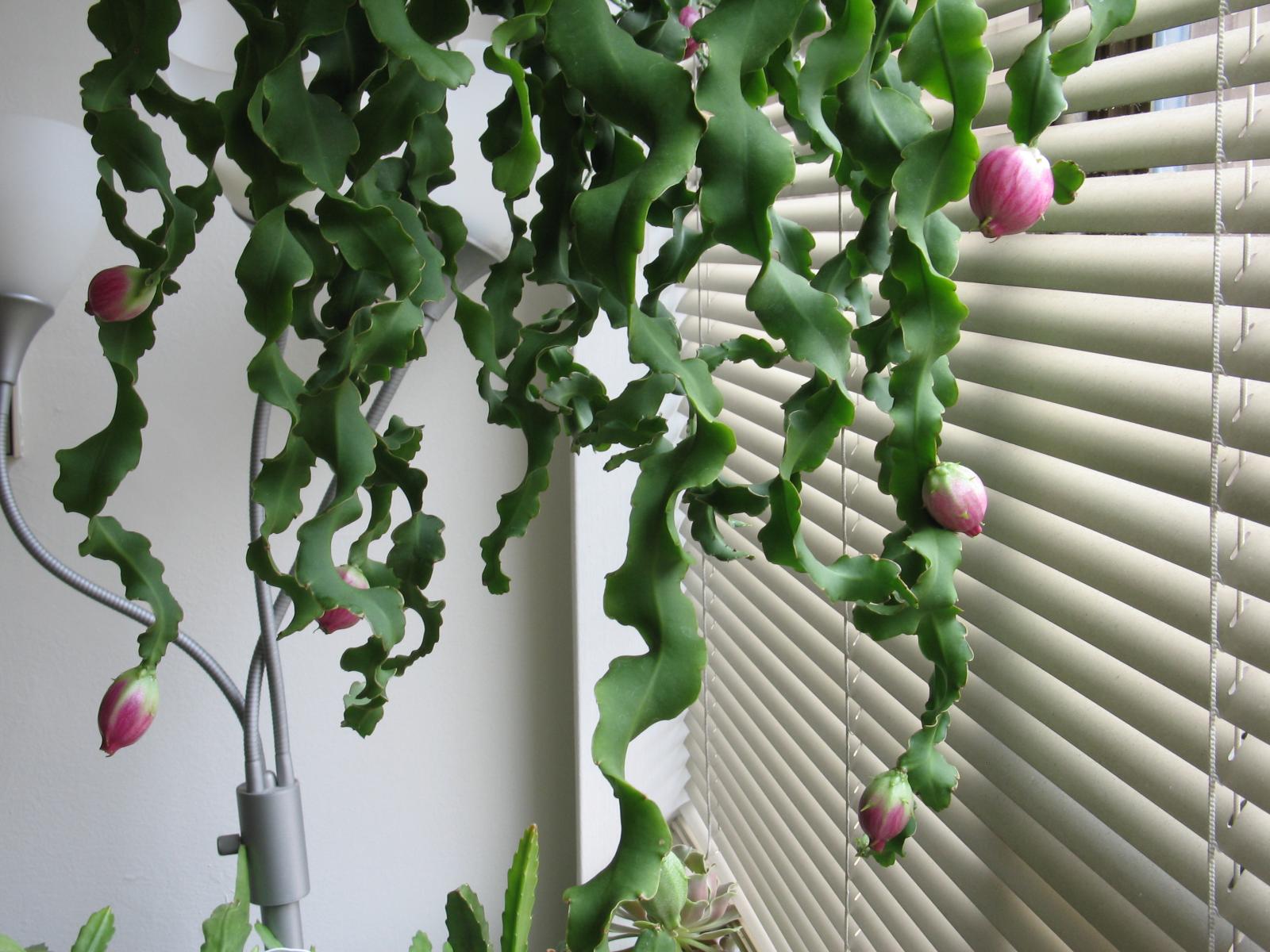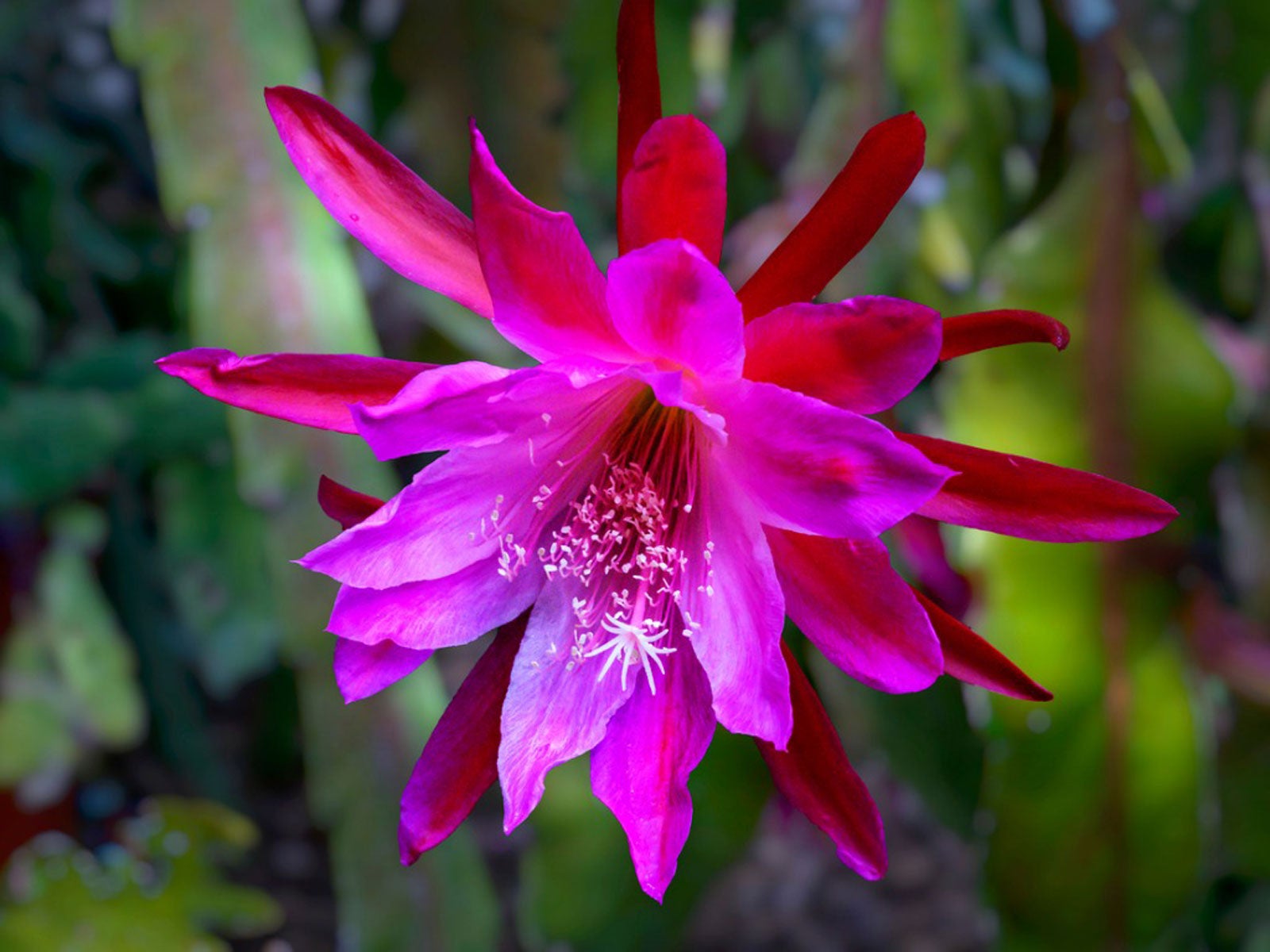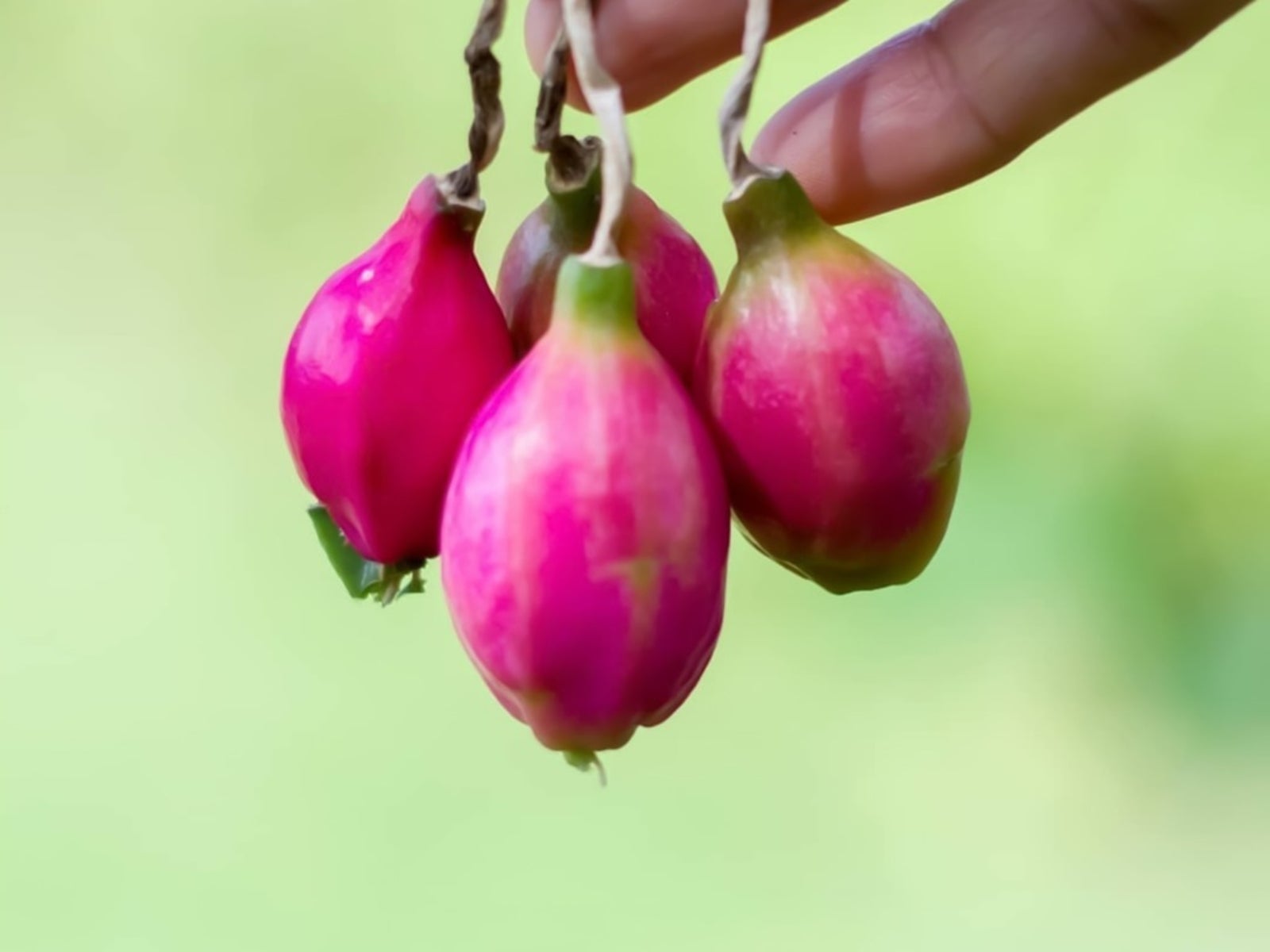Epiphyllum Varieties: Types Of Cactus Orchid Plants


Teo Spengler
- Botanical name: Epiphyllum spp.
- Height: up to 10 feet (3 m)
- Width: up to 3 feet (0.9 m)
- Sun exposure: Full sun to partial shade with afternoon shade
- Soil requirements: High organic matter; loam (silt) or sand
- Hardiness zones: 10-12
Epiphyllums are the gems of the cactus world. Commonly called orchid cacti, they produce stunning flowers that open only for a brief amount of time. But their show is worth the wait. Each species offers magnificent blooms, including some that make their appearance at night.
There are dozens of varieties in the Epiphyllum genus. The majority are epiphytic and live in trees in the tropical rainforest, though a few species are terrestrial. There are also new hybrids coming onto the market, which means Epiphyllum enthusiasts have numerous varieties of orchid cacti to try.
Night-Blooming Cactus Varieties
Night-blooming cactus is the common name given to at least four different types of plants: Hydrocereus undatus, Epiphyllum oxypetalum, Peniocereus greggii and Selenicereus grandiflorus. Of these species, Epiphyllum is the most common kind gardeners grow at home.
Epiphyllum is a genus of epiphytic cacti, meaning they grow on and use other plants for physical support. However, they are not parasitic plants and do not take their food directly from their support plant. Rather, they take moisture and nutrients from rain and debris that collects on the support plant.
Epiphyllum have flat, fleshy stems with serrated edges. Most have a trailing appearance, but since there are hundreds of cultivars, some Epiphyllum exhibit other growing habits as well. This family of night-blooming flowers is native to Central America and, given their exotic blossoms, are referred to as orchid cacti.
Orchid cacti need temperatures between 45 and 70 degrees F. (7-21 C). All Epiphyllum varieties are heat lovers and cannot tolerate any freezing temperatures. But in warm climates, even tropical orchid cacti need a bit of shade during the hottest parts of the year.
As an epiphyte in its natural habitat, the plant's roots take nutrients and moisture from the air. This means Epiphyllum have very low fertilizer needs and their primary requirement is humidity.
Gardening tips, videos, info and more delivered right to your inbox!
Sign up for the Gardening Know How newsletter today and receive a free copy of our e-book "How to Grow Delicious Tomatoes".
Queen of the Night Variety
Queen of the Night (Epiphyllum oxypetalum) is the most popular and commonly cultivated species in the genus. It offers showy, dinner plate sized flowers with a strong, enchanting fragrance.
Typically, the fragrant flowers open only once at night, and disappear the following day. If pollinated, the blossoms produce oblong purple fruits. A mature plant can produce flowers from spring through mid-summer.
Other Epiphyllum Varieties
While Queen of the Night may be the most cultivated species in the genus, it is hardly the only variety available. There are dozens of varieties offering flowers in a wide range of hues including red, pink, purple, white, yellow and orange.
For pink flowers, try a climbing cactus (Epiphyllum phyllanthus). It is shorter and a bit stouter than Queen of the Night. The flowers are also not as big, but the touch of pink in the center of the flower is beautiful.
There is something romantic and exotic about night-blooming cacti. But if you prefer an Epiphyllum variety that blooms during the day, consider ‘Wendy.’ Its large pink flowers lack the strong fragrance of the night-blooming varieties, but its gorgeous blooms do open during daylight hours. Which means you don't have to stay up late to see them in full bloom.
Common Orchid Cactus Cultivars
The number of cultivars and bloom colors in the Epiphyllum genus is astounding. But here are the common names and bloom colors of some popular Epiphyllum cultivars:
Red
- Arlene
- Beautiful Red
- Miss America
Pink
- Unforgettable
- Millennium
- Ophelia
Purple
- Dragon Fruit
- Miss Hollywood
Yellow
- Jennifer Anne
- King of Yellows
- Desert Falcon
Orange
- Cutie
- Dragon Heart
- Hawaii
White
- French Sahara
- Fred Bouton
- College Queen
Orchid Cactus Care
Epiphyllum orchid cacti need three things to thrive: water, light and nutrients. Hitting the right balance between these elements is important.
Water
When it comes to a watering schedule, it depends on your climate. In a temperate or humid climate, water your night-blooming cactus once every 10 days or so. If the climate is especially dry, provide water weekly. During the growing season, keep containers evenly moist, especially during flowering.
Epiphyllum plants require humid conditions that mimic their tropical rainforest home. Mist plants frequently, especially in hot conditions. Remember that these are not cacti from dry deserts but hail from the tropics, so their water needs are quite different.
Light
Orchid cacti require ample light conditions to thrive, regardless of whether they grow indoors or outdoors. Experts recommend up to six hours a day of direct light, although, for indoor plants, less is still enough. Be sure to place indoor plants by a window so they can get the rays they need to photosynthesize and generate food. For outdoor plants, give them a sunny spot with some shade during the hot summer afternoons. Be careful, though, too much shade is the most common cause Epiphyllums fail to flower.
Nutrients
Plant Epiphyllums in a light, humus-rich potting mixture with good drainage. Orchid cacti prefer to be pot-bound but, when necessary, repot them after flowering.
All cacti are light feeders. Dilute fertilizer and use less than you would with leafy houseplants. Only feed once or twice a year. Feed plants with a low nitrogen fertilizer in late winter or early spring and again in mid-fall. Suspend fertilizing in the winter months and reduce watering by half.
Propagation
If you want to propagate these elegant plants, simply remove a length of stem, allow it to callus over for a couple of weeks, and then insert the stem in moistened sand. Keep the new leaf cuttings in moderate light and slightly on the dry side until rooting occurs. This is the quickest, easiest way to get more of these brightly colored plants.
Epiphyllum FAQ

Bonnie Grant is a professional landscaper with a Certification in Urban Gardening. She has been gardening and writing for 15 years. A former professional chef, she has a passion for edible landscaping.
- Teo SpenglerWriter
-
 Looking For Plants To Give You The Soft And Fuzzies? Try These 5 Fuzzy Leaf Plant Options
Looking For Plants To Give You The Soft And Fuzzies? Try These 5 Fuzzy Leaf Plant OptionsLovers of texture, drama, silver foliage and tactile plants will adore these special sensory garden additions. These fuzzy leaf plant options will leave you all aglow
By Susan Albert
-
 Get Ready For A Summer Of Hummers! Grow These Full Sun Hummingbird Plants and Flowers
Get Ready For A Summer Of Hummers! Grow These Full Sun Hummingbird Plants and FlowersIf you’re lucky enough to enjoy a sunny backyard, make sure you are maxing out on your pollinator opportunities and grow these full sun hummingbird plants and flowers
By Tonya Barnett
-
 Epiphyllum Cactus Info – How To Grow Curly Locks Cactus
Epiphyllum Cactus Info – How To Grow Curly Locks CactusCurly locks has curly, curved stems which are the result of a mutation. If you know someone with the plant, it is easy to learn how to grow curly locks from stem fragments. This article will help get you started.
By Bonnie L. Grant
-
 Epiphyllum Plant Care: Tips For Growing Epiphyllum Cactus
Epiphyllum Plant Care: Tips For Growing Epiphyllum CactusLook into growing some of the ten species of epiphyllum, or orchid cactus. Find them in garden centers or online, and grow them in much the same way you’d grow an orchid.
By Bonnie L. Grant
-
 Epiphyllum Seed Pods: What To Do With Pods On Epiphyllum Plant
Epiphyllum Seed Pods: What To Do With Pods On Epiphyllum PlantEpiphyllum cactus have lovely flowers, which turn into a chubby little fruit filled with tiny seeds. Growing Ephiphyllum seeds will take some patience but it is a rewarding endeavor that will give you more of these beautiful plants. This article will help.
By Bonnie L. Grant